Equine Asthma (EA) affects the horse’s respiratory tract by causing inflammation to the internal structures. Currently, this disease can be broken down into two categories: mild to moderate EA and severe EA. 14% of horses in the UK suffer from severe EA2.
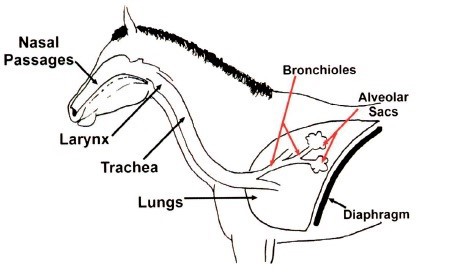
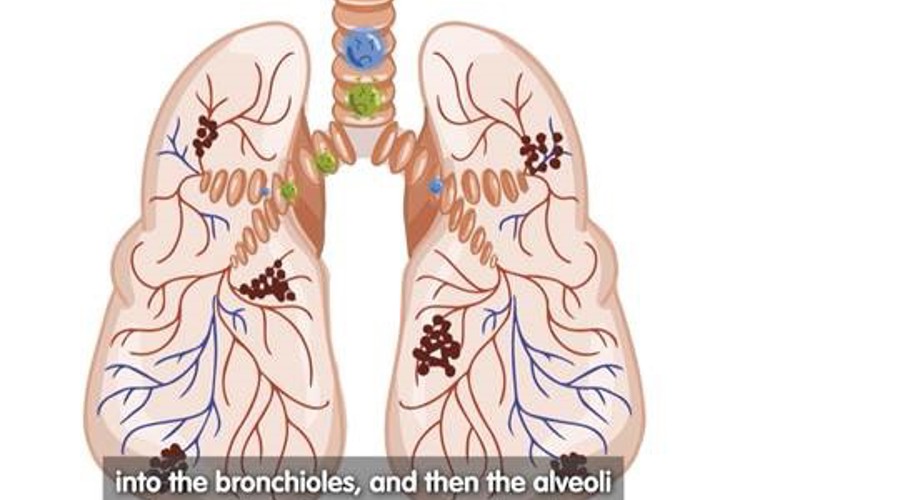 play-circle
play-circle
Watch
Introduction and respiratory anatomy
Causes
There are airborne particles small enough to enter the horse’s respiratory tract and cause irritation. These are known as aeroallergens and can be increased through poor management practices, such as inappropriate choice of bedding material or insufficient ventilation.
Aeroallergens may include various types of dust, mould, bacteria, mites, plant debris, pollen and toxic gases such as ammonia3. Pollen can sometimes trigger a different type of respiratory disease, known as Summer Pasture Associated Severe Equine Asthma (SPASEA), which occurs in horses kept at pasture and is particularly prominent during the summer months. Susceptible horses will be more sensitive to either a combination of these aeroallergens or all of them, leading to lower airway inflammation and greater mucus production when inhaled (very similar to an allergic reaction in humans).
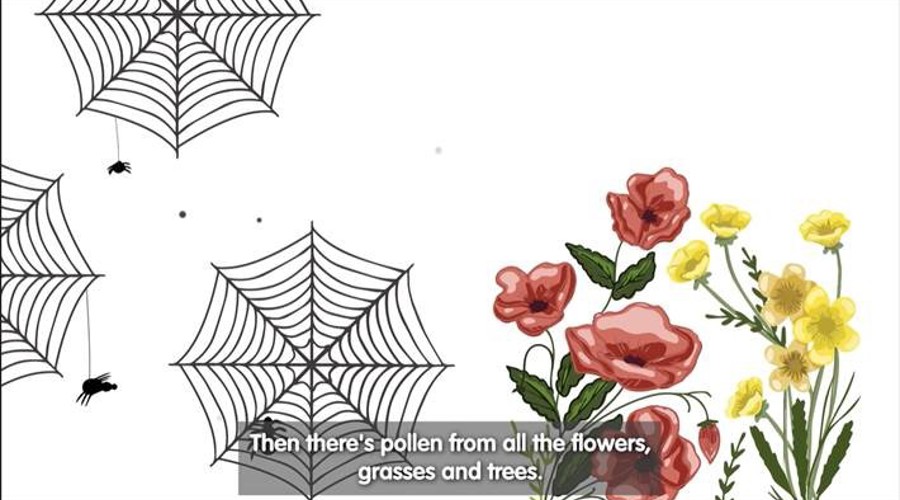 play-circle
play-circle
Watch
Causes of poor respiratory health
Signs
Every horse is an individual, meaning signs will often present themselves differently. The frequency and intensity of these signs will also vary depending on severity. Most horses will show all or a combination of the following signs:
- Coughing
- Difficulty breathing when at rest (characterised by increased nasal flaring and a more obvious heave line)
- Nasal discharge
- Fatigue
- Loss of performance
- Exercise intolerance
Some signs are only noticeable upon physical examination, such as crackles and wheezes (audible through a stethoscope). Other symptoms can help to distinguish between mild to moderate EA and severe EA – for example, difficulty breathing when at rest is typically only seen in horses with severe EA. Further characteristics between the severity of EA can be found here.
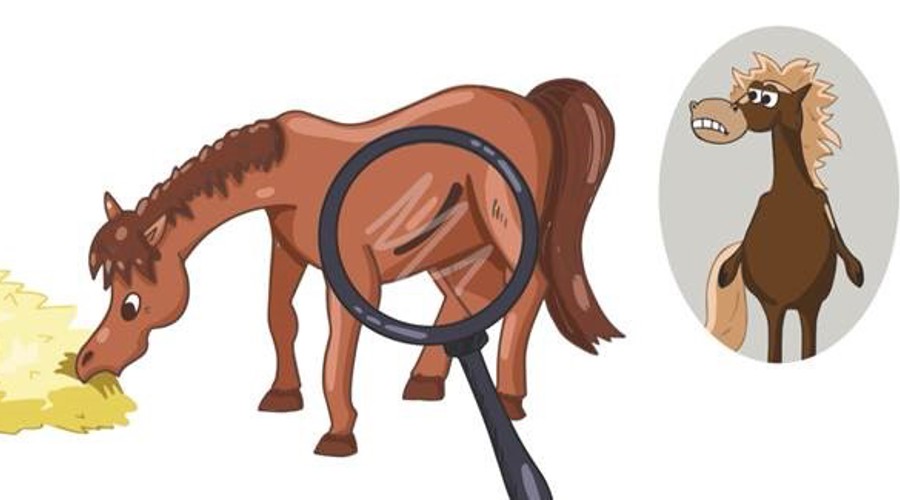 play-circle
play-circle
Watch
Signs of respiratory difficulty
Diagnosis
If your horse is displaying signs of EA it’s important to consult your vet for further advice. There are diagnostic tools available which can provide a high level of accuracy in determining the affected area. These tools are also useful for monitoring response to treatment.
Respiratory tract endoscopy is the most used when diagnosing EA4. A long, flexible tube (endoscope) with a tiny camera at the end is inserted up into the horse’s nose and down the trachea (windpipe), allowing the vet a clear view of the respiratory tract. Examination of the trachea may reveal a large build-up of mucus, which can be seen in many cases. Vets will usually sedate the horse for this procedure to not cause unnecessary stress. There are other tests which take fluid from the bronchioles to test what specific allergens the horse is allergic to5. This helps to formulate a more tailored management plan.
Treatments
Corticosteroids are often used in the treatment of EA. These are anti-inflammatory drugs, and must be administered by your vet either orally, intravenously or via the respiratory tract. Additionally, your vet may advise using medication as a “rescue treatment” prior to corticosteroids to open up (dilate) the airway and provide rapid relief. The effects of these medications are short-lived (up to 12 hours)6 so should be used alongside management practices to reduce aeroallergens and prevent further irritation.
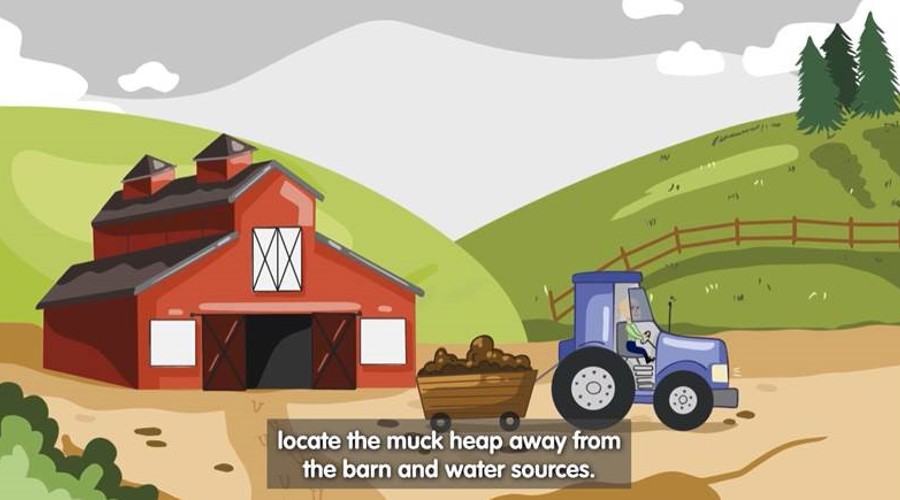 play-circle
play-circle
Watch
Preventative management practices & treatment
Management
Management strategies such as offering more turnout or soaking hay and reducing exposure to aeroallergens can often be enough to reduce symptoms of EA.
Types of bedding
chevron-down
chevron-up
Low dust bedding should be used as much as possible and can include wood shavings (dust extracted), paper, cardboard and pelleted straw. The stable floor should have suitable drainage to allow urine to drain away and prevent a build-up of ammonia. If rubber matting is used underneath bedding, this should be regularly lifted, hosed down and disinfected to maintain good hygiene.
Forage
chevron-down
chevron-up
The horse’s environment can be contaminated with dust from dry or poor quality forage.
Soaking hay causes dust particles to become damp and stick to the hay rather than being inhaled. Make sure the hay is soaked by fully immersing it in water hosing the hay down is often insufficient. Hay should be soaked for no more than 30 minutes to avoid an excess loss of nutrients unless the hay is also being soaked for an overweight horse.
Steaming hay is another option —this is slightly more costly, but unlike soaking, it extracts less nutrients from the hay. Steaming kills 99% of mould and bacteria when steamed at 90°C – 100°C7. If using home-made devices, these can lead to an increase in mould and bacteria if the recommended temperatures are not reached. Feeding high quality haylage is also an option as it generally holds a higher moisture content than hay, meaning fewer dust particles.
Forage should ideally be fed from the ground to encourage head lowering and aid in clearing the airways, as haynets have been found to increase inflammatory responses within the respiratory system. Bucket feeds should also be dampened to prevent dust particles being inhaled and to aid with digestion.
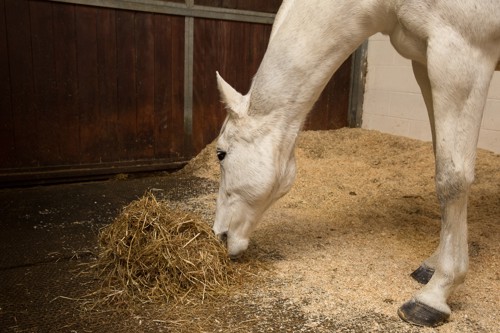
Storage
chevron-down
chevron-up
Both forage and bedding should be stored away from the stable. Storage space should be dry and well sheltered from the elements to prevent mould and bacteria developing. Always check forage for mould before feeding, obvious signs would be visible white or brown patches. Feed bins and utensils should be cleaned regularly to prevent a build-up of bacteria.
Mucking out
chevron-down
chevron-up
Stables should be mucked out daily to prevent a build-up of ammonia. Deep litter bedding is the least suitable for the horse’s respiratory health.
Ideally, the horse should be removed from their stable while mucking out, as this can generate a lot of dust. If possible, allow dust to settle before returning them back to their stable.
Grooming
chevron-down
chevron-up
Where possible, grooming should be done in an open and airy space to prevent a build-up of dust and dirt in a confined area.
Yard cleanliness
chevron-down
chevron-up
The yard should be kept as clean and tidy as possible. Sweeping should be done daily to avoid accumulation of dirt and dust, and stable fixtures should be dusted regularly to remove cobwebs.
Ventilation
chevron-down
chevron-up
Stables should be well ventilated, allowing continuous circulation of air. Ventilation can be achieved through stable doors, adequate roof height, air vents and windows.
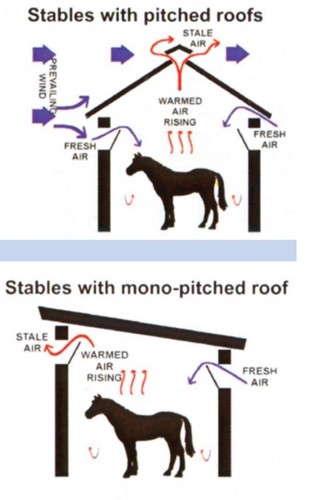
Exercise
chevron-down
chevron-up
Latex and dust in arena surfaces have also been found to cause respiratory irritation. Outdoor exercise is recommended as much as possible, and arena surfaces should be hosed down as required to help reduce dust particles especially during the summer months.
Turnout
chevron-down
chevron-up
Increasing turnout is one of the best ways to reduce your horse’s exposure to dust and other aeroallergens, allowing complete access to fresh air, unless the horse has been identified to have a sensitivity to pollen.
 play-circle
play-circle
Watch
Written in partnership with Nottingham Trent University

References
chevron-down
chevron-up
- Hotchkiss, J.W. (2022) Equine asthma: managing the environment. UK-Vet Equine, 6(6), Pp.234-241.
- Pirie, R.S. (2018) Severe equine asthma–an overview. Equine Health (39), Pp.21-28.
- White, S. (2019) Development of a comprehensive protein microarray for immunoglobin E profiling in horses with severe asthma. Journal of Veterinary Internal Medicine, 33(5), Pp 2327-2335.
- Roy, M.F. and Lavoie, J.P. (2003) Tools for the diagnosis of equine respiratory disorders. Veterinary Clinics: Equine Practice, 19(1), Pp.1-17.
- White, S.J. (2019) Antigen array for serological diagnosis and novel allergen identification in severe equine asthma. Sci Rep, 9. 15170.
- Pirie, R.S. (2014) Recurrent airway obstruction: a review. Equine veterinary journal, 46(3), Pp.276-288.
- Moore-Colyer, M. & Fillery, B. G. (2012). The effect of three different treatments on the respirable particle content, total viable count and mould concentrations in hay for horses.Forages and grazing in horse nutrition, Pp.101-106.
Get in touch – we’re here to help
The Horse Care and Welfare Team are here to help and can offer you further advice with any questions you may have. Contact us on 02476 840517* or email welfare@bhs.org.uk – you can also get in touch with us via our social media channels.
Opening times are 8:35am - 5pm from Monday – Thursday and 8:35am - 3pm on Friday.
*Calls may be recorded for monitoring purposes



